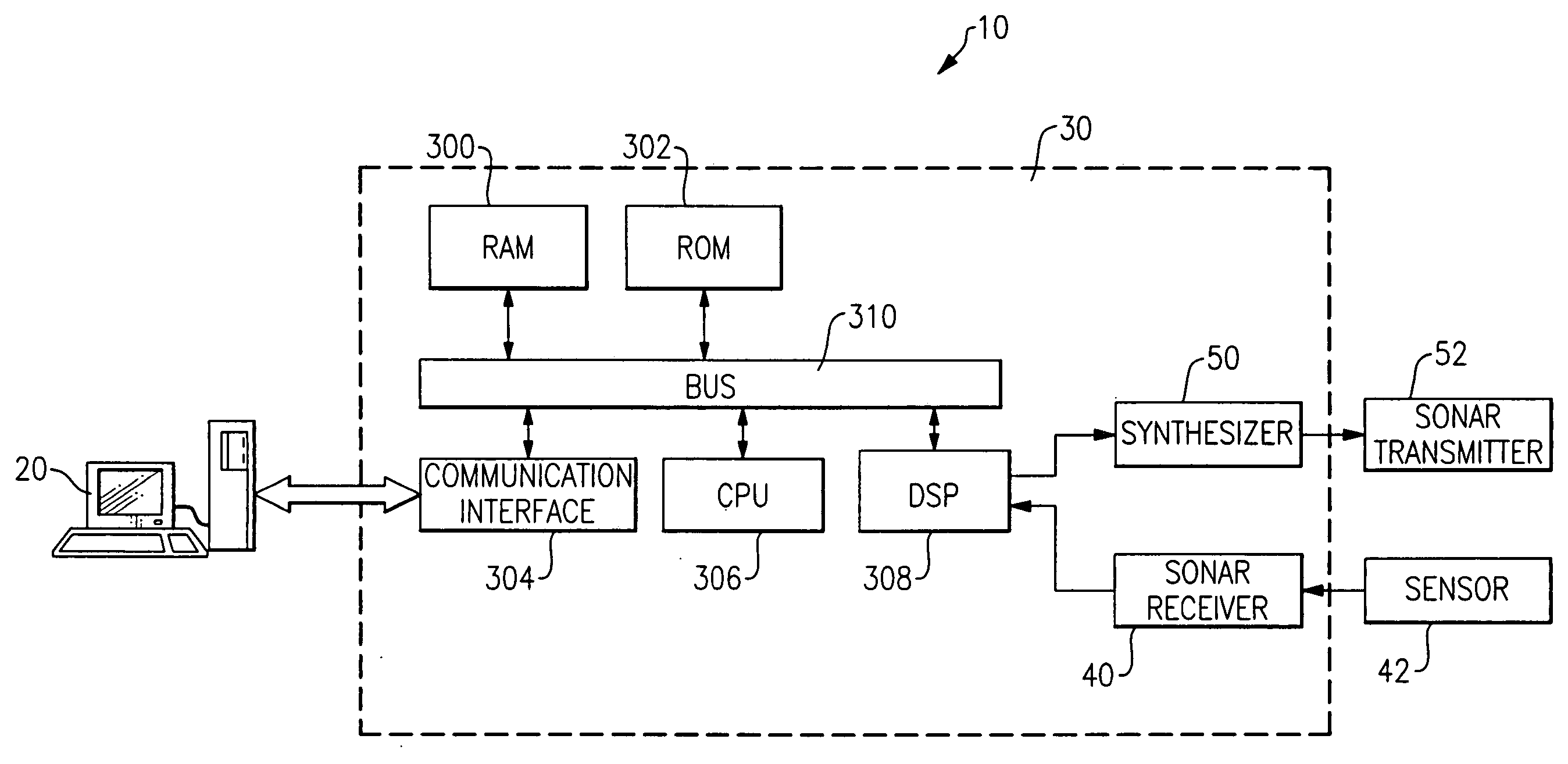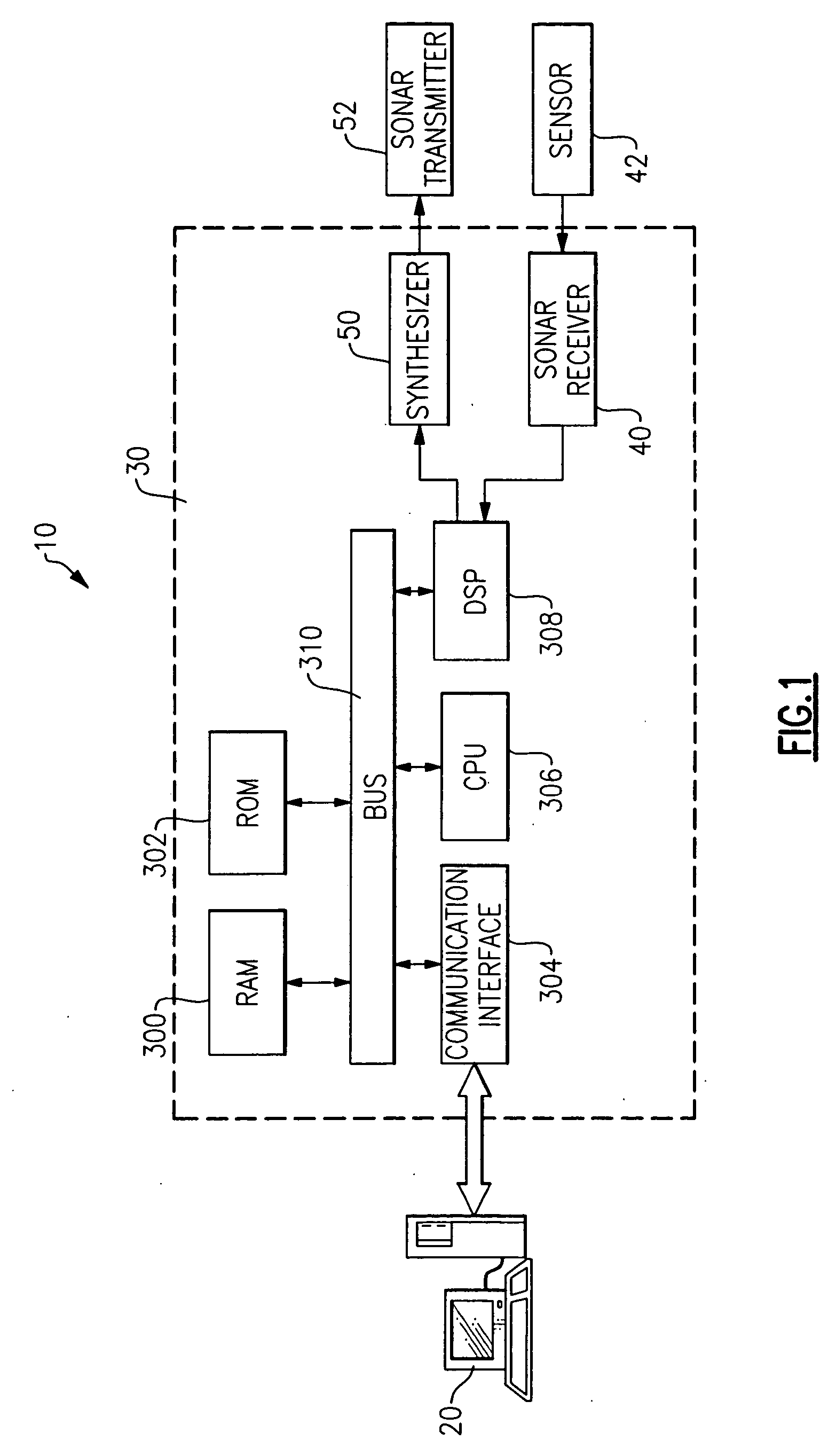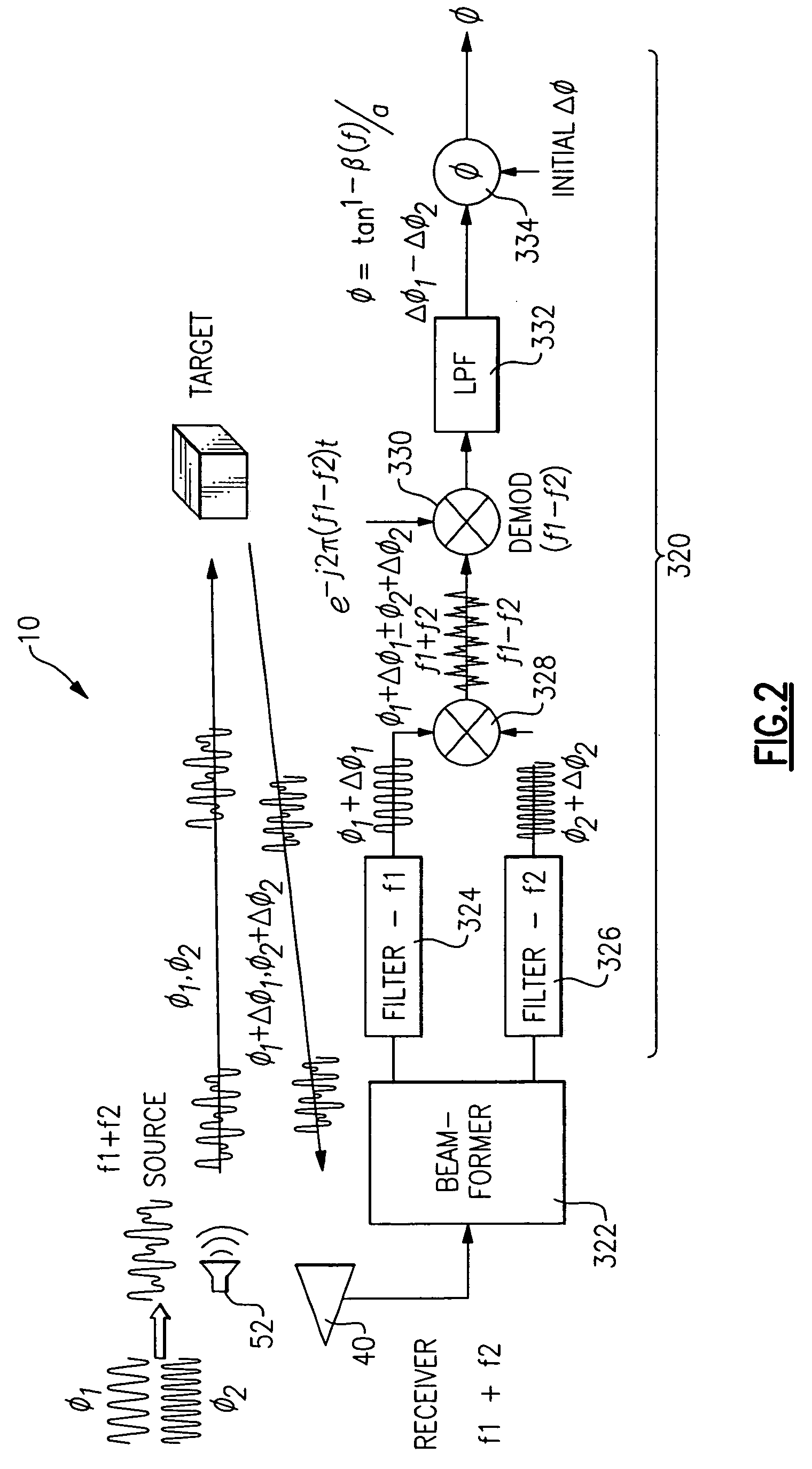Narrowband phase difference measurement technique for sonar applications
- Summary
- Abstract
- Description
- Claims
- Application Information
AI Technical Summary
Benefits of technology
Problems solved by technology
Method used
Image
Examples
first embodiment
[0037] Referring to FIG. 2, a block diagram of the signal processing flow 320 in accordance with the present invention is disclosed. Sonar transmitter 52 which is configured to actively ping, i.e., direct sonic energy into a propagation channel. The multi-frequency transmit signal is of the form:
T(f)=sin(ω1t+φ1)+sin(ω2t+φ2) (10)
The multi-frequency transit signal propagates in the channel until it is reflected off the target, as shown in FIG. 2. The reflection causes a phase shift to occur. As described above in great detail, the phase shift is a function of the material composition of the target. The multi-frequency received signal is of the form:
R(f)=sin(ω1t+φ1+Δφ1)+sin(ω2t+φ2+Δφ2) (11)
The receiver 40 obtains R(f) from the hydrophonic sensor element 42 as shown in FIG. 2. Receiver 40 typical includes a pre-amplifier and filter coupled to the hydrophonic sensor element 42. The received signal is directed into an A / D / converter and digitized. The digitized signal is directed ...
second embodiment
[0043] As embodied herein and depicted in FIG. 4, a block diagram of a sonar system in accordance with the present invention is disclosed. While the embodiment shown in FIG. 2 processes the return signal in the time-domain, the embodiment depicted in FIG. 4 represents a frequency-domain processing approach.
[0044] As noted above, the multi-frequency received signal is of the form of equation (11). The receiver 40 obtains R(f) from the hydrophonic sensor element 42 as shown in FIG. 4. Receiver 40 typical includes a pre-amplifier and filter coupled to the hydrophonic sensor element 42. The received signal is directed into an A / D / converter and digitized. The digitized signal is directed into beam former 322. Beam forming is a type of spatial filtering that is configured to distinguish the spatial properties of a return signal from noise and / or interference. A digitized version of the signal characterized by equation (11) is directed into Fast Fourier Transform (FFT) module 342. At this ...
PUM
 Login to View More
Login to View More Abstract
Description
Claims
Application Information
 Login to View More
Login to View More - R&D
- Intellectual Property
- Life Sciences
- Materials
- Tech Scout
- Unparalleled Data Quality
- Higher Quality Content
- 60% Fewer Hallucinations
Browse by: Latest US Patents, China's latest patents, Technical Efficacy Thesaurus, Application Domain, Technology Topic, Popular Technical Reports.
© 2025 PatSnap. All rights reserved.Legal|Privacy policy|Modern Slavery Act Transparency Statement|Sitemap|About US| Contact US: help@patsnap.com



